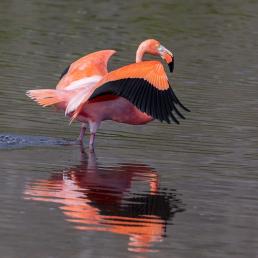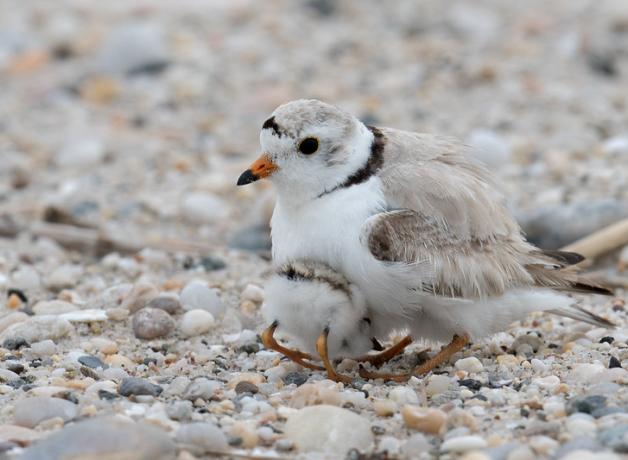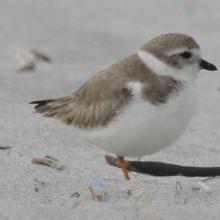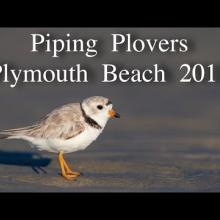BirdNote®
The Plover and the Hurricane
Written by Zoe Grueskin
This is BirdNote.
[Piping Plover calls]
[Lapping waves]
Count yourself lucky if you see—or hear—the melodious Piping Plover.
Anne Hecht: They have a very distinctive and melodic call, in fact their scientific name is Charadrius melodus.
[Piping Plover call]
Not only are the shorebirds tiny and conveniently sand-colored; they’re also threatened in much of their range.
Anne Hecht has studied Piping Plovers on the Atlantic Coast for over 35 years. In that time, she’s seen plovers get a big boost from something rather surprising: hurricanes.
Anne Hecht: Piping Plovers really prefer beaches where there’s an open swath of sand, little to no vegetation.
And that’s exactly what Superstorm Sandy left behind on barrier islands in New York and New Jersey. Plant-free, sandy beaches actually offer better camouflage for nesting plovers.
Anne Hecht: The nests and the birds really blend into the sand, and they’re very difficult for predators to detect.
And, once they hatch, plover chicks have an easier time foraging on storm-washed beaches.
Where these hurricane-created habitats were protected, Piping Plovers have boomed.
[Piping Plover calls]
Anne Hecht: I consider Piping Plovers, for all of their vulnerability, to be extremely lucky birds. They have such a dedicated network of conservation partners who work so hard to protect them.
For BirdNote, I’m Zoe Grueskin.
###
Senior Producer: John Kessler
Producer: Mark Bramhill
Managing Editor: Jazzi Johnson
Managing Producer: Conor Gearin
Bird sounds provided by The Macaulay Library of Natural Sounds at the Cornell Lab of Ornithology, Ithaca, New York. Piping Plover ML64002271 recorded by Andrew Aldrich.
Piping Plover Xeno Canto Xeno Canto 433082 recorded by Phil Brown.
BirdNote’s theme was composed and played by Nancy Rumbel and John Kessler.
© 2023 BirdNote April 2023
Narrator: Zoe Grueskin
ID# PIPL-02-2023-04-27 PIPL-02







